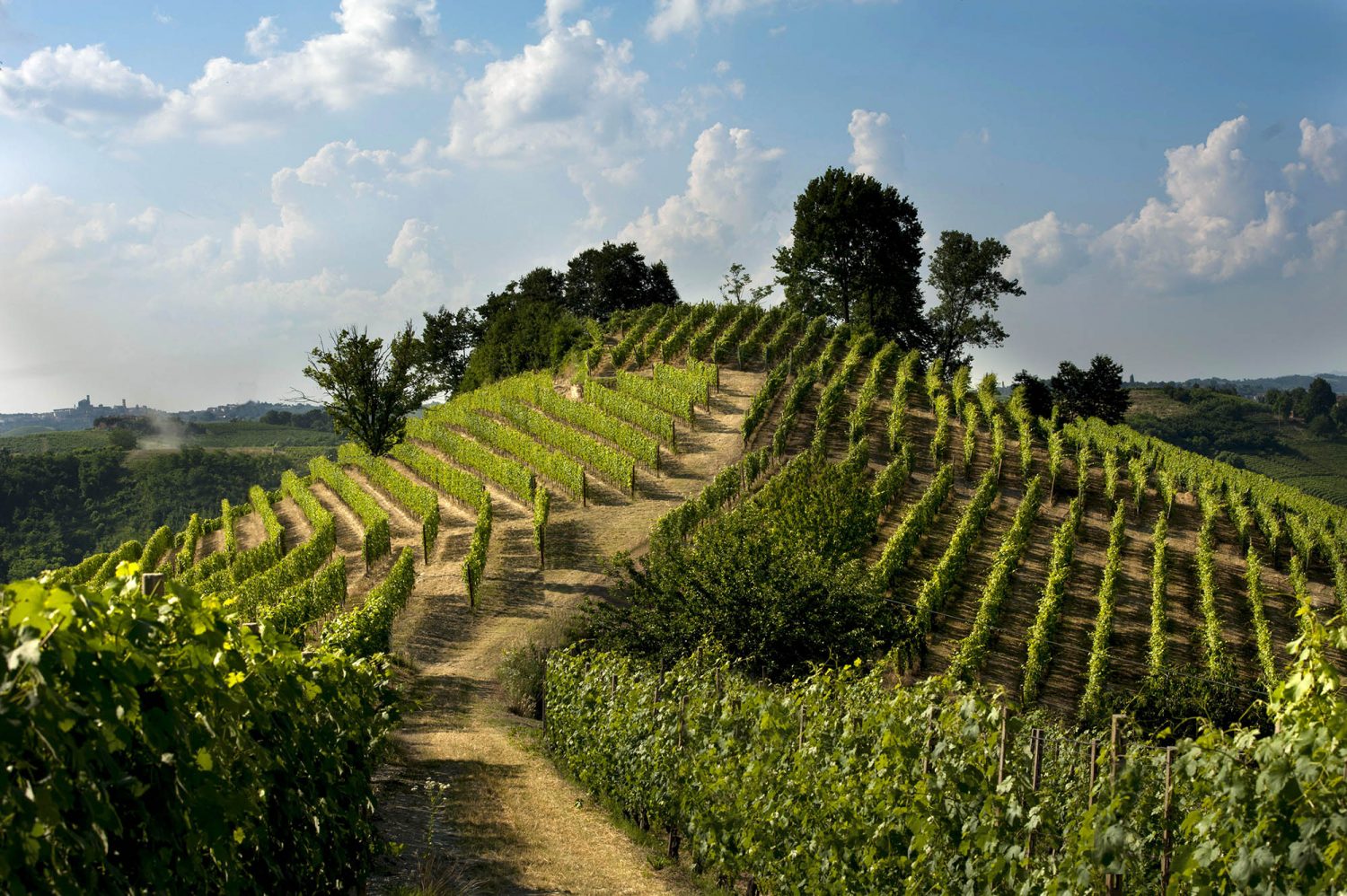Wine Alchemy - www.winealchemy.co.uk
Roero – white and red wines in my Glass

The Roero DOCG region is on the northern (left bank) side of the Tanaro river in Piemonte. This river divides Roero from the likes of Barolo and Barbaresco on its southern side. Roero’s territory isn’t a monoculture; while vines have been grown here since Etruscan times, the 1,180 hectares of vineyards coexist with orchards, forests and arable farming. Unusually, the Roero DOCG has two different wines, one white and one red.
The white comes from 907 hectares of Arneis, known as Roero Arneis, while the red is from 273 hectares of Nebbiolo known just as Roero. Both grapes are challenging, but both can achieve spectacular results in the right place and the right hands. The DOCG excludes inappropriate sites such as flat land and valley floors, while the maximum altitude is 400 metres. Meanwhile, Arneis, once nearly extinct, has become fashionable, while Nebbiolo surely needs no introduction.
This article highlights six wines recently chosen by the Consorzio Tutela del Roero to represent their DOCG; three whites and three reds.
Terroir
The geology of Roero dates back 130 million years. Then it was a sea bed with deposits of sands, gravels and marine clays. After being uplifted 2-3 million years ago, the soft limestone and sandstone hills eroded quickly. Then there was a dramatic shift in the course of the Tanaro river to its present-day channel some 250,000 years ago. Hence the soils that exist today in Roero are chaotically varied but share the properties of being loose and free-draining. They lack organic matter and cannot store water for long. They are also rich in minerals such as gypsum, formed by the evaporation of seawater. Some areas were beaches, and their fossil shells frequent many soil profiles.
Climatically, rainfall is low and is mainly in October-January. It’s also warmer than Barolo and Barbaresco, while the nearby Alps mean that hailstorms are a summer risk. Consequently, Roero is semi-arid, and its hills are almost totally devoid of water: the landscape is scattered with cisterns to collect rainwater or wells to draw from deep aquifers.
A Consorzio zoning project resulted in 135 MeGA’s (Additional Geographical Mentions), covering 50% of the vineyard area. Each one must have three growers and includes only the top and middle hill slopes. These sites are the best “Crus”, where wines can add their names to the label. You can see a map of these here. These Crus will gradually become known for their characteristics over the coming years.
To generalise, the best places for Arneis are often on the colder north-facing slopes or hilltops of this hilly terrain, leaving the warmer south-facing slopes to Nebbiolo. Many vineyards are extraordinarily steep, offering protection but precluding mechanisation.
Roero DOCG
Roero Arneis DOCG uses the Arneis grape variety, a high-quality white grape rescued from extinction. The story of Arneis is in a previous article. While Arneis is now grown in other parts of Piemonte, it’s at its most characterful and widespread in Roero. The minimum ageing for the wine is four months, with a Riserva level at 16 months. It also allows for a Roero Arneis Spumante, Metodo Classico, and ranges from dry to sweet. All Roero Arneis must be at least 95%, and in practice, most are 100%. Roero Arneis is a dry wine, excellent when young but ages well over 4-5 years. Don’t overchill them; you’ll miss the nuances that the wines can offer.
Roero DOCG is from Nebbiolo. The minimum ageing is 20 months (including a mandatory six months in wood). The Riserva level stipulates 32 months (of which six must be in wood). Again, the wines must be a minimum of 95%, and most are 100%. Roero is an excellent source of high-quality Nebbiolo wines with no shortage of fragrance, finesse and elegance. Thanks to the sandy soils, the tannins are less marked in Roero than in neighbouring Barolo and Barbaresco, so these wines can be enjoyed younger but still have the capacity to age. Always consider decanting to aerate young wines or remove possible sediment from older ones.
The Wines
Below are the six wines, each from a different producer. The three Roero Arneis DOCG’s are from the latest 2020 vintage. The three Roero DOCG’s are from the superb 2016 vintage, so they also have some evolution. All are from MeGA sites and drinking now, with availability and prices/UK stockists shown. The interactive map below shows the winery locations.
